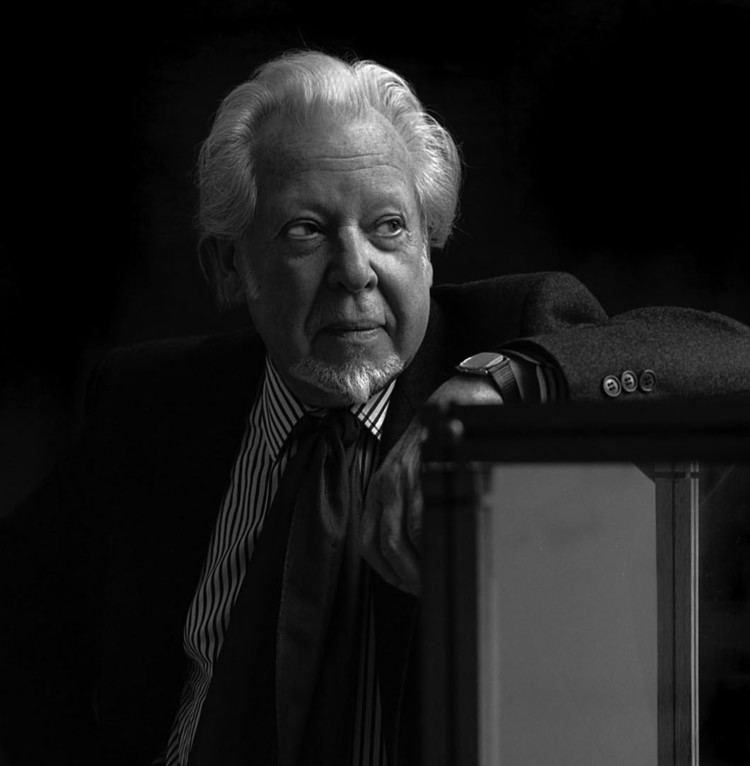Spouse Alison Eames (m. 1942) | Role Photographer Name Helmut Gernsheim | |
Occupation photographer and photo historian Books A concise history of photography, Lewis Carroll - Photographer, Creative Photography: Aesthetic, The History of Photogra, L J M Daguerre | ||
Helmut gernsheim as a collector
Helmut Erich Robert Kuno Gernsheim (1 March 1913 – 20 July 1995) was a historian of photography, collector, and photographer.
Contents
- Helmut gernsheim as a collector
- Gernsheim Plays Twenty Questions with George Bernard Shaw
- Life
- Honors and awards
- References

Gernsheim Plays Twenty Questions with George Bernard Shaw
Life
Born in Munich, Germany, Gernsheim studied art history at the Ludwig Maximilian University of Munich. He took up photography in 1934 at the urging of his brother who thought it a more practical profession, and graduated from the State School of Photography, Munich, after two years' study. He started working as a colour photographer using the German Uvachrome process before going to Paris for an exhibition of his work and then to London to work on a commission from the National Gallery, London. He was given British citizenship in 1946 and continued to live in London for most of his life.
At the outset of World War II, Gernsheim was interned as a "friendly enemy alien" for a year at Hay in New South Wales, Australia along with other German nationals. While interned, he lectured other internees on the aesthetics of photography and wrote his critique on photography, New Photo Vision, which was published in 1942 and led to his becoming a friend of fellow critic and historian Beaumont Newhall. Gernsheim earned his release from internment by volunteering to work for the National Buildings Record, photographing important monuments in the London area with a view to revealing their artistic merits. These photographs became the basis of two more books. They were praised by critics including Kenneth Clark and Nikolaus Pevsner and in 1943 were described by The Architectural Review as "nothing short of a rediscovery of the Baroque monuments". Around this time he met and married his wife Alison Eames Gernsheim. He joined The Royal Photographic Society in 1940 become a Fellow (FRPS) in 1942.
In 1945, at Newhall's prompting, Helmut and Alison Gernsheim started collecting the works of historic photographers, especially British ones, which were disappearing. They amassed a huge collection containing work by such luminaries as Julia Margaret Cameron, Alvin Langdon Coburn, Hill & Adamson, William Henry Fox Talbot, and Louis Daguerre. They rediscovered the long-lost hobby of Lewis Carroll when in 1947 Helmut stumbled across an album of Carroll's portraits in a junk shop. Ultimately this collection, along with an estimated 3–4 million words of notes on the subject led to his writing the 180,000-word book The History of Photography. When the first edition was published by the OUP in 1955 it became an instant classic and the definitive reference work for historians of photography for decades afterwards, being described by Beaumont Newhall as "a milestone in the history of photography" and by other reviewers as "the photographer's bible" and "an encyclopaedic work". Along the way, in 1952 Gernsheim discovered the long-lost world's first permanent photograph from nature, created by Joseph Nicéphore Niépce in 1826 (View from the Window at Le Gras). Helmut and Alison continued to publish numerous articles and books on various aspects of photography and a variety of photographers.
Ultimately, Gernsheim needed to find a home for his vast collection of over 33,000 photographs, 4,000 books, research notes, his own correspondence, and collected correspondence including letters by Daguerre and Fox Talbot. He sought unsuccessfully to found a national museum of photography in the UK (ultimately a National Museum did not happen until 1983). In the end, after many fruitless discussions with authorities and potential sponsors in several countries, he sold everything to the University of Texas at Austin in 1963 where it formed the basis of a new Department of Photography at the Humanities Research Center. His collection of modern photography was retained by him and ultimately passed to the Forum Internationale Photographie (FIP) at the Reiss-Engelhorn-Museen, Mannheim.
Alison Gernsheim died on 27 March 1969 and Helmut Gernsheim remarried in 1971. Helmut Gernsheim died on 20 July 1995.
